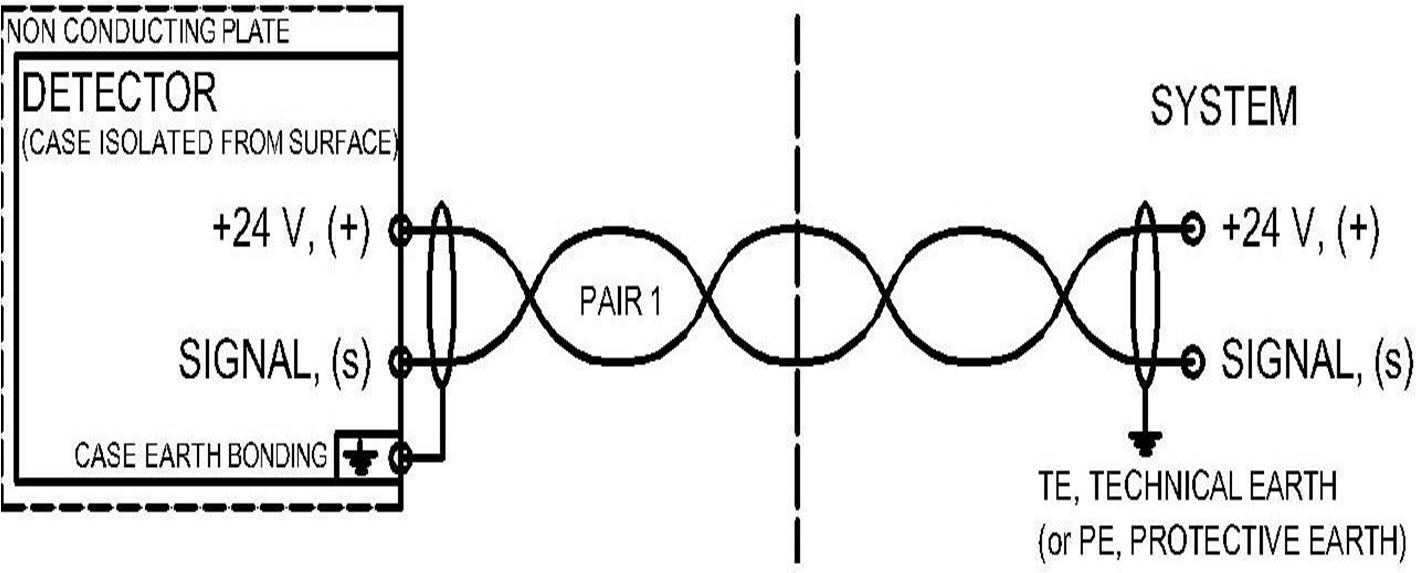
5 minute read
International Journal for Research in Applied Science & Engineering Technology (IJRASET)
from Hazard and Operability Study of Rotary Drum Dryer in Hazardous Waste Management Industry
by IJRASET

ISSN: 2321-9653; IC Value: 45.98; SJ Impact Factor: 7.538
Advertisement
Volume 11 Issue IV Apr 2023- Available at www.ijraset.com
The specific or predominant gas to be detected at the designated location is identified and the detector is calibrated for thatgas.Ifmore than one combustible gas is presentin a given location, set the detector calibration for the most difficult (least sensitive) component to detect. The combustible gas used for calibration must comply with CSA under the following conditions: For instruments designed specifically for methane detection or for general combustible gas detection, methane must be used to calibrate LEL sensors, up to Instruments for general purpose detection of combustible gases other than methane, propane gas can be used to calibrate the LEL sensor for instruments intended to detect a specific combustible gas or vapor other than methane, use the actual gas recommended by the manufacturer. Calibrated range for fixed detectors should be: 0 to 4000 PPM - Volatile Organic Compounds in Air detectors should be used, which have an emitter positioned with the sensing element. The transmitted signal must be linear between 0 and 22 mA according to the following requirements: Detector Error/Open Circuit Alarm (0-4mA DC)Sensor Overload/Calibration Mode Alarm (0-4mADC)analog output signal (4-20mA DC)signal out of range alarm (above 20mA DC)Alternatively, the detector transmitter output can use optional digital communication protocols such as Mod bus RTU, HART, ASCII or Foundation Field bus where available. The above alarm requirements also applywhen signals other than 0-22mA are used. Detectors must include a built-in linear scale or digital readout, or a temporary connector for calibrating the detector. The detectors are equipped with intelligent microprocessor-based fault diagnosis and calibration functions. The calibration should be non-invasive, ie can be carried out without opening the sensor/transmitter housing detectors must have non-interactive null and span settings Infrared Hydrogen Sulfide and Combustible Gas Point Detectors shall have automatic temperature compensation for changes in ambient temperature and humidity. The detectors are shielded against RF and EMI according to IEC 61000-4-3, Level 3 (at a power level of 10 V/m). Detectors should also be fitted with sunscreens if site conditions require it. Specify specific detectors to be installed in high temperature gas turbine chambers with remote calibration equipment.
3) Detector Sitting
The need for and specific location of fixed detectors should be assessed on a case-by-case basis in accordance with ISA-RP92.0.02, Part II - 1998. Detection should be based on protection against specific local hazards and not general area protection of drying. Detectors should normally be placed near identifiable single points of potential release where there is a significant risk of VOC, hydrogen sulfide or combustible gas leakage, such as: B. fuel pump and compressor seals, valves, etc.For liquid hydrocarbons, combustible gas detection should only be used for potential sources of flammable liquid release with an effective vapor pressure of at least 200 kPa (abs) (29 psia) at 54 °C.
4) Installation Of The Gas Sensor
gas detectors require regular maintenance. Accessibility should be considered when choosing the installation site, and maintenance platforms should be placed where they are needed. Do not expose gas detectors to strong infrared radiation or fumes. Gas detectors should be installed as late as possible during construction to avoid welding and paint damage. However, setup and stabilization must be performed before using any gases or liquids that the detectors are designed to measure. Stabilization time is 2-4 days or more depending on sensor type and temperature unless otherwise noted. Bypass all relay controls during stabilization. To protect the gas detector from dirtand moisture, mount the housing with the sensor cover facing down. Wiring shouldalso be done from below for the same reasons. When cabling is routed from above in cramped situations, the gland must be properly sealed. When installing a gas detector or making any electrical changes to the gas detection system, power must be removed to avoid damage. The gas detector should be mounted close to the potential leak for quick response, however, the density of the gas should be considered when determining the mounting height. When monitoring heavier-than-air gases, gas detectors should be mounted 30-50 cm off the floor. There is therefore sufficient space between the gas detector and the floor for maintenance of the gas detector and floor cleaning. If there is a possibility of mechanical damage, a protective cover must be fitted around the sensor. When monitoring lighter-than-air gases, gas detectors should be mounted on or near the ceiling. If the densityof the gas to be measured is approximatelythat of air, gas detectors should be mounted at breathing height. Install a splash guard in areas where detectors will be exposed to water. A heated enclosure maybe required if the detector is used outside of normal operating temperature and/or humidity. The detectors are designed todetect gases andsolvents based on alarmlimits.These devices requireregular maintenance andtestingtoensureproper operation. A full calibration should be performed at least once a year and more frequent testing. The website's security statement indicates the correct test range. The test gas pressure at the gas inlet of the detector must be within ±10% of the nominal atmospheric pressure. The concentration of the calibration and test gases must not exceed the flow rate of the detector. For volatile gases, the concentration should be between 0and4000PPM. Toohigh a gasconcentration can damage the sensor element. Make sure thatthe gas flowthrough the calibration adapter is not obstructed. Contact your dealer for most calibration gases.
ISSN: 2321-9653; IC Value: 45.98; SJ Impact Factor: 7.538

Volume 11 Issue IV Apr 2023- Available at www.ijraset.com
Provision of Ventilation fan for exhaust removal or fresh air ingress. - 2nos
Additional hose reel( 25 x 30 mtrs) - 1no near coal storage area.
Additional sand bucket storage near the furnace area.
Provision of clear Entry and emergency exit area and pathways.
Note: Selection And Installation Of Gas Detectors, Fire Fighting Equipment are per Indian Standards.
VI. CONCLUSION
In conclusion, where particulate solid materials are being dried in industrial process equipment, the potential for fires and explosions exists. An understanding of the conditions necessary for these events to be initiated is essential to effectively manage the risk. Monitoring of LEL, VOC, and CO to detect the onset of combustion can be effective in preventing fires in drying systems. Good bonding and grounding practices also are essential where conductive components are present inside of the drying equipment. Explosion prevention and protection systems mayneed to be installed where suspensions of Sludge or dustsAs we come toconclusion from the project report such as hazard and operability of rotary drum dryer analysis detailed and possible risk outcomes from the drying process in fire and explosion, toxic gas release to environment. The most suitable recommendation are implemented like fire extinguisher installation, gas detectors installation, Fire hose reel installation, placement of fire buckets with sand and provision related to emergency exits. From this installation of fire safety equipment we protect the process, equipment and men near working and also increase the company valuation and reputation. We further planning to implementation of automatic fire sprinkler system, Fire suppression system to be installed at rotary drum dryer. And seclude to provide training include standard operating procedure, emergency preparedness and procedure and fire fighting training





